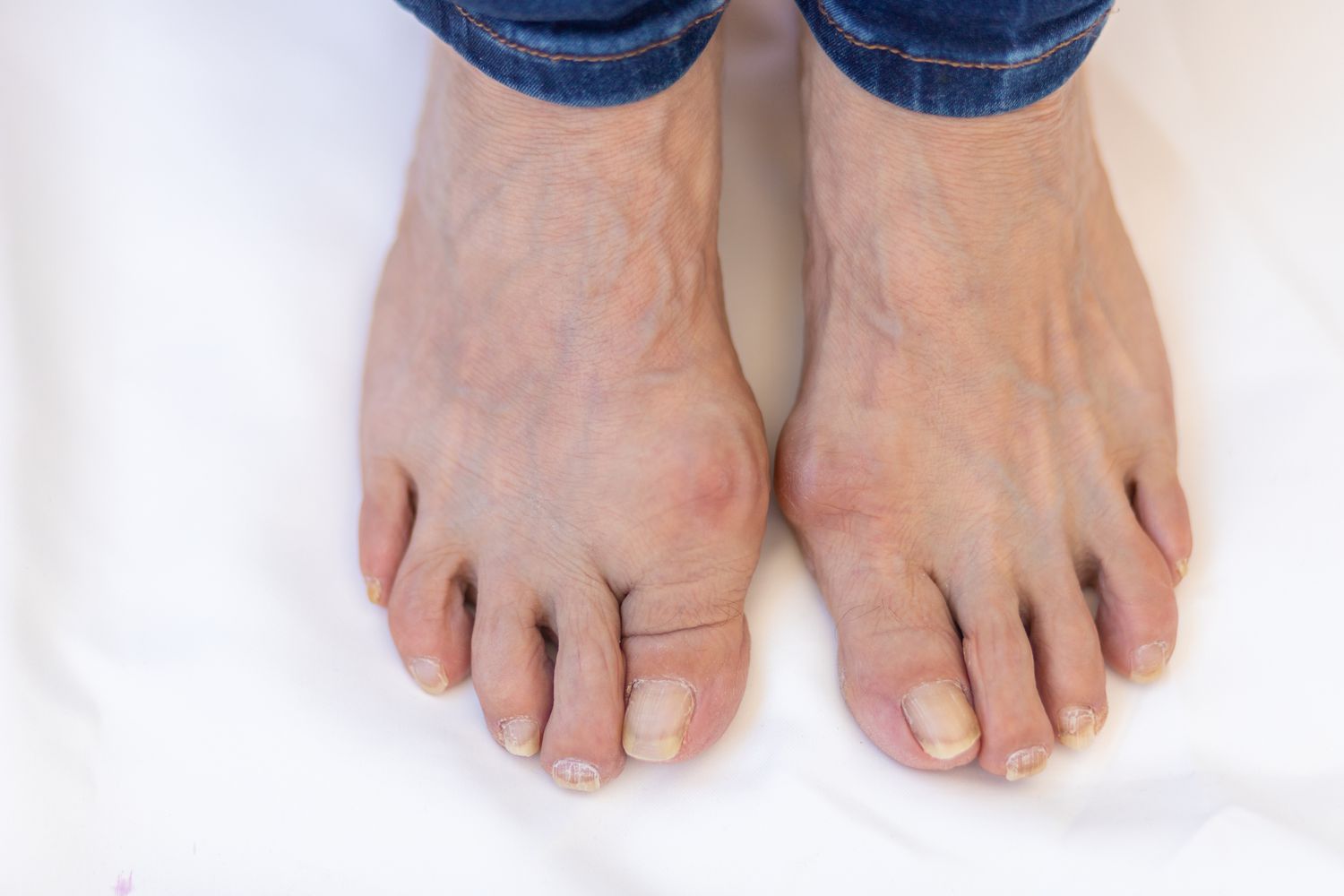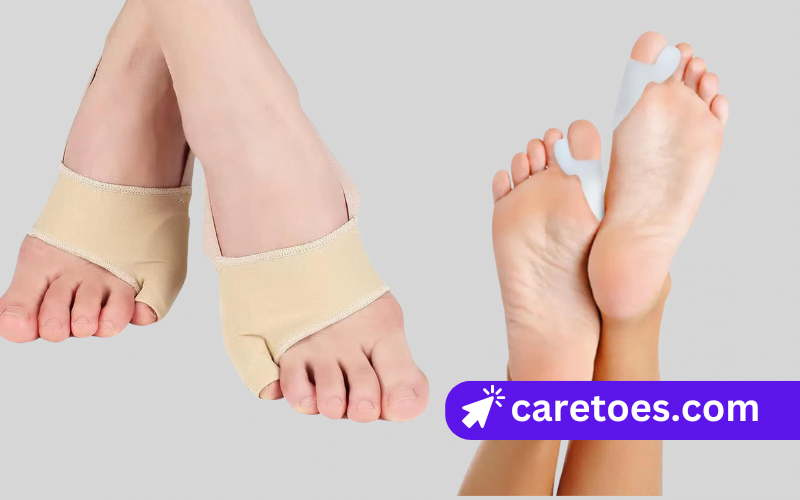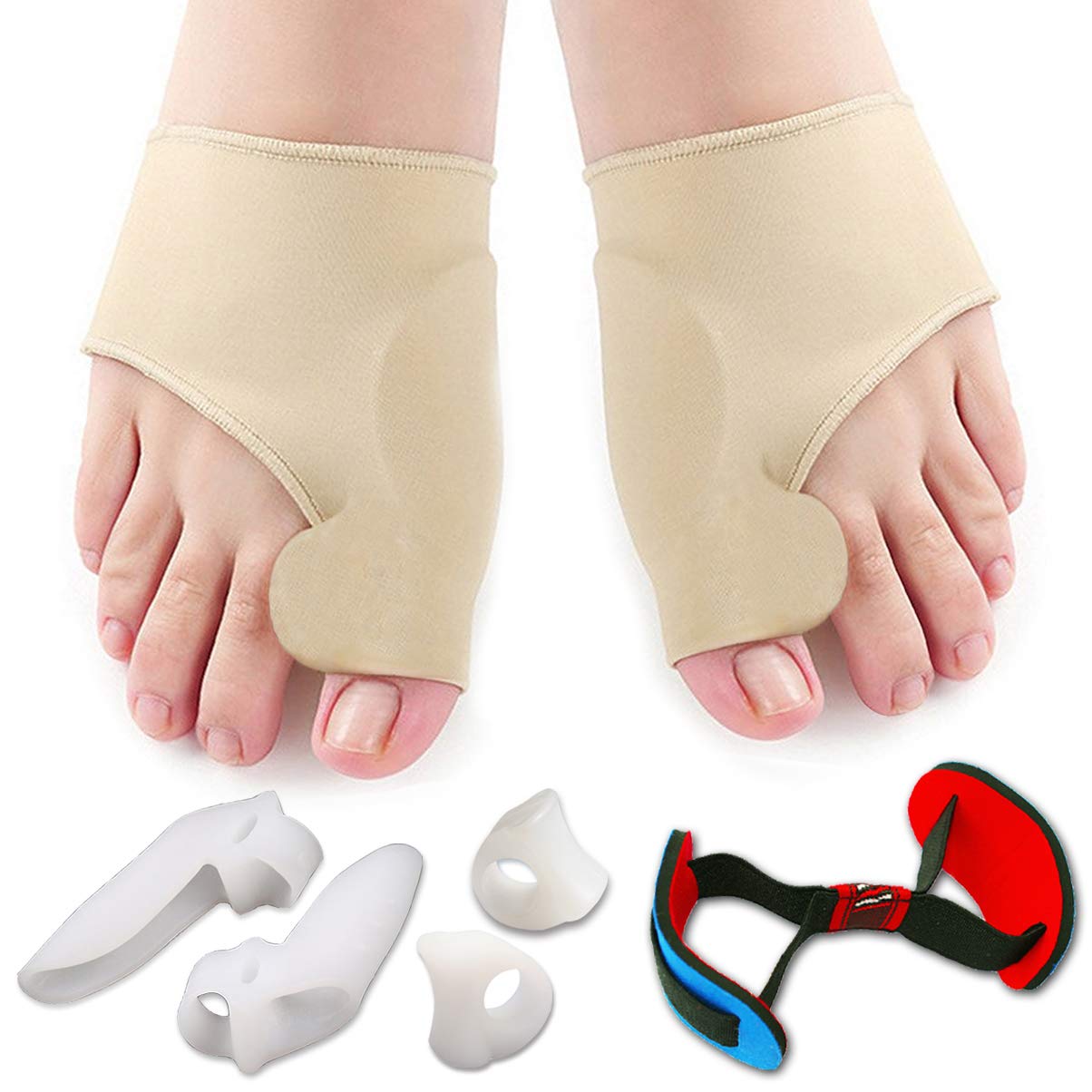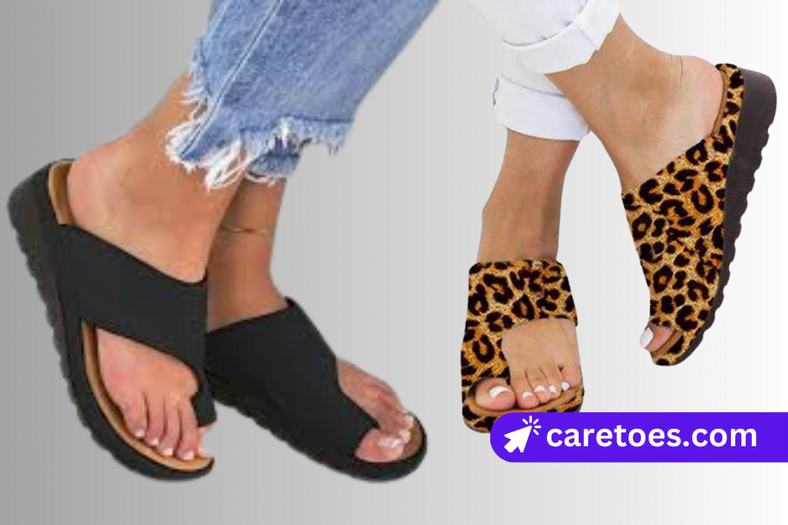Bunion pain results from a bony bump forming at the base of the big toe. Gout is caused by uric acid crystal deposits in joints.
Bunions are structural deformities that lead to pain and swelling at the joint of the big toe. They often develop due to wearing tight or ill-fitting shoes, which causes the toe to push against the adjacent toes. This condition can result in chronic pain, redness, and inflammation.
Gout, on the other hand, is a type of arthritis characterized by sudden, severe attacks of pain, redness, and tenderness in the joints. It is caused by high levels of uric acid in the blood, leading to the formation of sharp crystals in joints, most commonly the big toe. Understanding these differences helps in accurate diagnosis and effective treatment.
Table of Contents
Introduction To Bunion Pain And Gout
Bunions are bony bumps on the joint at the base of the big toe. These bumps can cause pain and swelling. You may notice redness around the bump. Tight shoes can make the pain worse. The skin over the bunion might get thick.
Gout is a type of arthritis. It causes sudden, severe pain in the joints. The big toe is often affected. The joint can become very swollen and red. Touching the area might feel very painful. Gout attacks can come without warning. Eating foods high in purines can trigger gout.
Causes Behind Bunion Development
Genetics play a major role in bunion development. Many people inherit a foot shape that leads to bunions. Foot structure can also be passed down from parents. This can include flat feet or low arches. These traits increase the risk of bunions.
Wearing tight or narrow shoes can cause bunions. High heels are a common culprit. They push the toes together, causing misalignment. Shoes that don’t fit well also contribute. It’s important to choose shoes with a wide toe box. This helps prevent bunions from forming.
Understanding Gout: A Metabolic Perspective
Gout happens because of high uric acid. Uric acid comes from purines in food. When uric acid is too high, it forms crystals. These crystals cause painful gout attacks. Gout usually affects the big toe. Pain from gout is sudden and severe.
Eating foods high in purines can increase uric acid. These foods include red meat, seafood, and alcohol. Drinking lots of water helps reduce uric acid. Staying hydrated is important. Exercise and a healthy diet are key. Avoiding sugary drinks can also help. Weight loss can reduce gout attacks. Healthy habits can manage gout better.
Physical Manifestations: Bunions Vs. Gout
Bunions usually hurt at the base of the big toe. Gout pain often occurs in the big toe joint. Both can cause severe discomfort.
Bunions make the big toe point inward. A bony bump appears on the side of the foot. Gout makes the joint red, swollen, and tender. The skin may look shiny and feel warm.
Pain Characteristics: Acute Vs. Chronic
Bunion pain is usually chronic and localized. It often feels like a dull ache. Pressure from shoes can make it worse. The pain can be constant and affects daily activities. Relief often comes from wearing wider shoes. Bunions may cause swelling and redness around the big toe.
Gout pain is typically acute and intense. It can appear suddenly, often at night. The pain is sharp and can be excruciating. Gout attacks cause severe inflammation and tenderness. The affected joint may be red and warm to touch. Gout often affects the big toe but can also affect other joints.
Treatment Options For Bunions
Bunion pain often arises from the joint at the base of the big toe, while gout typically causes severe pain in the toe joint due to uric acid crystals. Both conditions can lead to discomfort, but their treatments and causes differ significantly.
Understanding these differences aids in effective management and relief.
Conservative Approaches
Bunions can be treated without surgery. Wearing comfortable shoes can help reduce pain. Padding the bunion can ease discomfort. Using ice packs can reduce swelling. Orthotic devices may also help. These devices can correct foot alignment. Taking over-the-counter pain relievers can provide relief. Exercises to strengthen foot muscles are beneficial. Stretching can improve flexibility.
Surgical Interventions
Sometimes, surgery is needed to fix bunions. Bunionectomy is a common surgery. This removes the bunion. Osteotomy is another option. It involves cutting and realigning the bone. Arthrodesis fuses bones in the joint. Exostectomy removes part of the bone. Resection arthroplasty involves removing part of the damaged joint. Recovery from surgery may take several weeks. Physical therapy can help regain strength.
Managing Gout Effectively
Understanding the difference between bunion pain and gout is crucial for effective management. Bunion pain results from bone misalignment, while gout stems from uric acid buildup in joints.
Medications For Gout
Medications help in managing gout pain. Nonsteroidal anti-inflammatory drugs (NSAIDs) reduce inflammation. Colchicine is another option to relieve gout attacks. Corticosteroids are used in severe cases. They are taken orally or injected. Urate-lowering therapies help prevent future attacks. Allopurinol and febuxostat lower uric acid levels. Regular use of these medications is essential. Consult a doctor for proper dosage.
Lifestyle And Dietary Adjustments
Healthy lifestyle choices are crucial for managing gout. Drink plenty of water to stay hydrated. Avoid sugary drinks and alcohol. Eat a balanced diet with fruits and vegetables. Limit intake of red meat and seafood. Avoid foods high in purines like organ meats. Maintain a healthy weight to reduce stress on joints. Regular exercise improves overall health. Choose activities that are gentle on joints. Consult a nutritionist for a tailored diet plan.
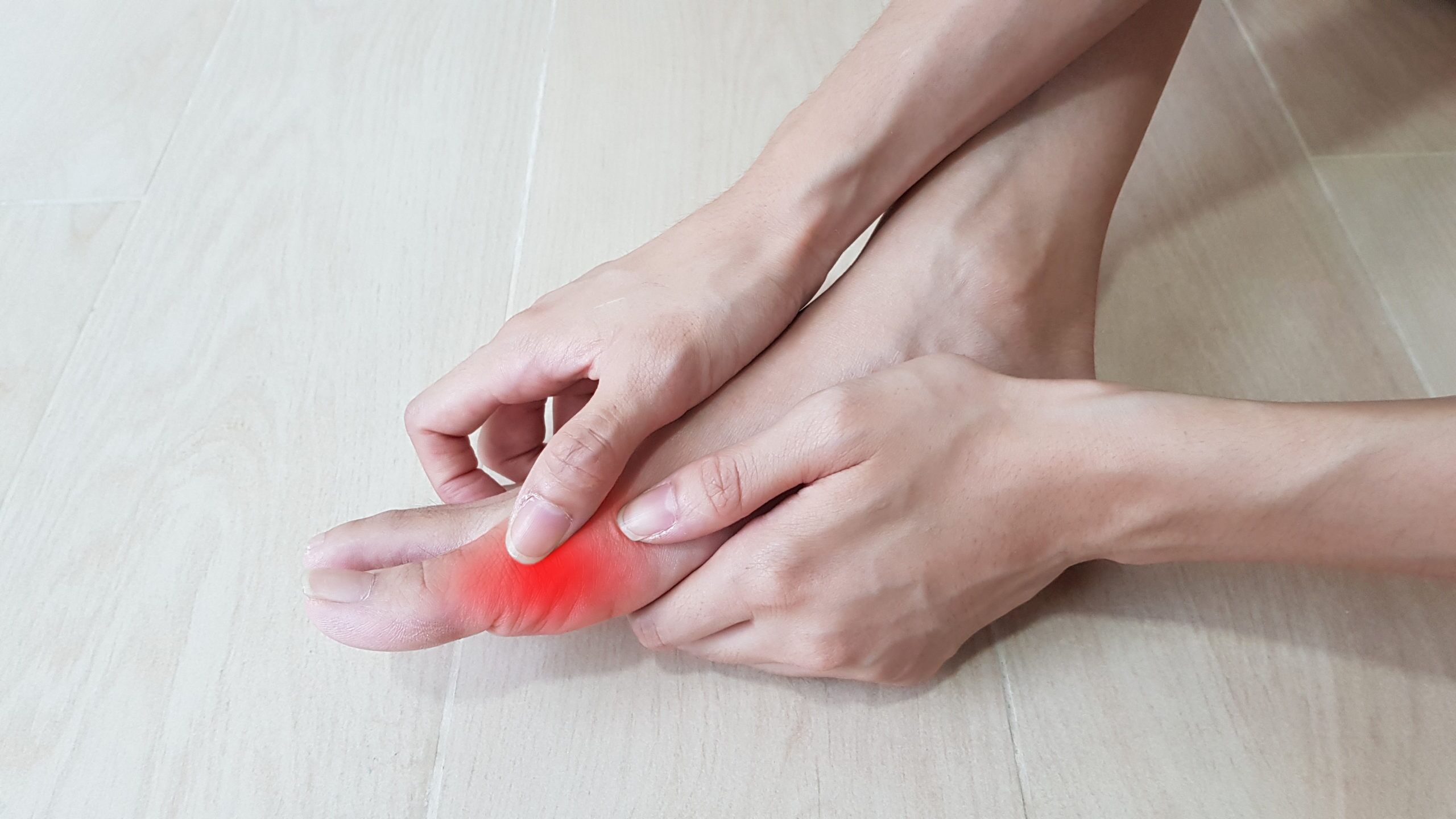
Credit: thebunioncure.com
Prevention Strategies
Wear comfortable shoes with a wide toe box. Avoid high heels and tight shoes. Use padding or orthotics to reduce pressure on the bunion. Maintain a healthy weight to lessen foot stress. Strengthen foot muscles through exercises.
Limit intake of purine-rich foods like red meat and seafood. Drink plenty of water to stay hydrated. Avoid alcohol and sugary drinks. Include low-fat dairy products in your diet. Take prescribed medications regularly.
Navigating Diagnosis And Medical Advice
Bunion pain often stems from a bony bump at the base of the big toe, causing discomfort and swelling. Gout, characterized by sudden and severe joint pain, results from uric acid crystal buildup. Understanding these differences aids in accurate diagnosis and treatment.
When To See A Doctor
Bunion pain and gout can be very confusing. Bunion pain often starts with a bump at the base of the big toe. Gout pain is usually sudden and intense. The affected joint may feel hot and swollen. Both conditions can limit movement. If the pain is severe or lasts more than a week, seek medical help. Early treatment can prevent further complications. Always consult a doctor if you notice any severe symptoms.
What To Expect During Consultation
The doctor will ask about your symptoms. They will examine your foot. They may order x-rays or blood tests. X-rays help identify bone changes. Blood tests can reveal high levels of uric acid. The doctor will discuss your treatment options. You may need medications or lifestyle changes. Always follow the doctor’s advice for the best outcome. Early diagnosis can help manage symptoms effectively.

Credit: www.quora.com
Living With Bunion Or Gout: Patient Stories
People with bunions often struggle with finding comfortable shoes. Pain can make walking difficult. Daily tasks become hard because of the pain. Gout sufferers face sudden flare-ups. These can cause intense pain and swelling. Both conditions require lifestyle changes. Adapting to the pain is a common challenge.
Some people use special insoles for bunions. Others try medications to manage gout. Diet changes help many gout patients. Avoiding certain foods reduces flare-ups. Bunions might need surgery for relief. Each person finds their way to cope. Support from family is crucial.
Many people find relief through treatment. One person avoided surgery with special shoes. Another reduced gout flare-ups by changing diet. Exercise helps some manage pain. Sharing stories gives hope to others. Support groups offer encouragement. People learn from each other.
Positive outcomes inspire those struggling. Small changes can make a big difference. Finding what works takes time. Patience and perseverance are key. Many live happy lives despite the pain. Their stories show that hope and help are always available.
Frequently Asked Questions
How Do I Know If It’s Gout Or Bunion?
Gout causes sudden, intense joint pain, often in the big toe. Bunions are bony bumps, causing gradual discomfort and deformity. Consult a doctor for an accurate diagnosis.
What Does Bunion Pain Feel Like?
Bunion pain feels like a constant, sharp ache at the base of the big toe. It worsens with walking.
How Can You Tell The Difference Between A Bunion And Arthritis?
A bunion causes a bony bump at the base of the big toe, while arthritis leads to joint inflammation and pain.
How Do I Know If I Have Gout Or Arthritis In My Big Toe?
Check for sudden, intense pain, redness, and swelling for gout. Arthritis usually causes gradual pain and stiffness. Consult a doctor for diagnosis.
Conclusion
Understanding the differences between bunion pain and gout is crucial for effective treatment. Bunion pain typically results from structural issues, while gout stems from uric acid buildup. Early diagnosis and proper care can alleviate symptoms. Always consult a healthcare professional for personalized advice.
Stay informed and take proactive steps for foot health.

